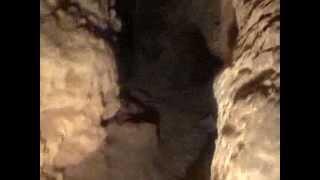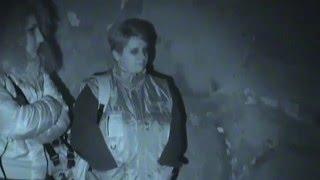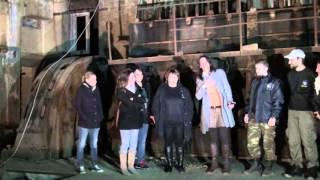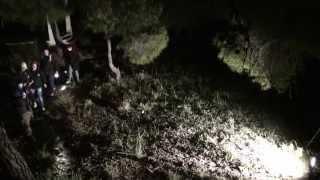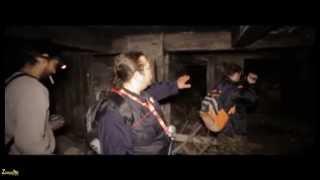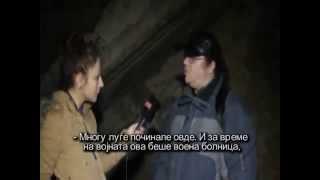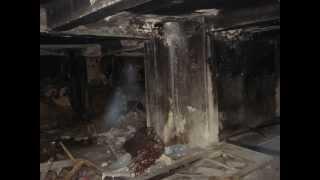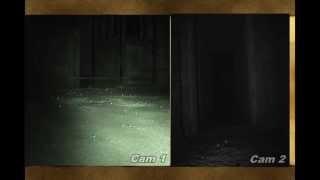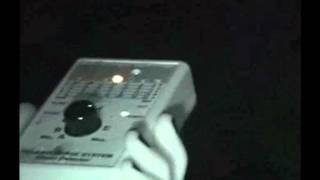With all 360° videos change the video quality all the way up to 4k for best video.
To control the 360 cam, depending on you watch the video's.
PHONE - Use your finger to change the cam locations.
PHONE - Move phone around to where you want to see.
VR HEAD SET - Just look around.
COMPUTER - Click on the sceeen to move. camera around to where you want to see.
The Kraftfuttermischwerk made food for animals, now it’s just food for thought.
The way to anyone’s heart is through their stomach and for a time VEB Kraftfuttermischwerk Fürstenberg was loved by all who gobbled up its produce. But turkeys, chickens, pigs and cows are fickle fodder futterers. No gobble, no party – Futtermischwerk forgotten.
Mauerfall made a pig’s dinner of it, as indeed it did of many things. There were 120 workers here when it closed in 1992 despite big investment to bring it up to standard. It had been in operation since 1957.
The Futtermischwerk wasn’t the only casualty of reunification. Local man Werner Strache wrote about the changes in Fürstenberg at the time, saying, “the economy collapsed, businesses closed down.”
The biggest employer in the town, the Fürstenberg section of VEB Schiffselektronik Rostock, was closed down, while the Kraftfuttermischwerk “had to stop its work,” Strache said. Two clothing factories that mostly employed women were also wound down.
“Unemployment that was never before experienced or feared took hold,” Strache wrote. “Now we know what it is to be unemployed and no longer needed.”
It wasn’t always a Futtermischwerk, oh no! It used to be known as Behrnsche Mühle (Behrns’ Mill), upholding a long tradition of milling in Fürstenberg on the Havel. The tradition was grounded in the 14th century.
It seems the first to build a mill on the site of what would later become the Futtermischwerk was Johann Christian Negendanck in 1720. The mill went through various owners, naturally enough, before Ludwig Behrns took it over in 1876.
Behrns had good timing. The railway reached Fürstenberg the following year and had a huge impact. Suddenly people could get trains. But from a miller’s point of view, it meant a greater supply of grain, and more options to distribute the milled product.
Horse and cart took the grain to and from the trains, and Behrns grew the business by expanding the site. The mill had around 12 workers in 1894.
Ludwig Behrns died in 1904. Willy Behrns, his son, took over. Willy oversaw a renovation of the business in 1910, but a large fire on Oct. 6, 1911 arguably had a greater impact, burning the whole place down.
More than 100 construction workers helped build a new mill – the buildings you see today – within six months in 1912. Very soon it was producing 400 sacks of wheat and 200 sacks of rye every day. This increased rapidly over time.
Apparently “no expense was spared to keep the business up to date technically in all areas.” A new flour and bran granary with access to rail and water was added in 1925, when 10 rail carriages could be loaded with grain at the same time. Steamboats and tubs were loaded waterside.
By the time Firma L. Behrns celebrated 50 years in 1926, it stood “as an exemplary company whose good foundations ensure it will also maintain its level in future.”
The mill was one of north Germany’s biggest, (and north Germany was much bigger at the time, too), daily producing 800 sacks of wheat and 400 sacks of rye.
To control the 360 cam, depending on you watch the video's.
PHONE - Use your finger to change the cam locations.
PHONE - Move phone around to where you want to see.
VR HEAD SET - Just look around.
COMPUTER - Click on the sceeen to move. camera around to where you want to see.
The Kraftfuttermischwerk made food for animals, now it’s just food for thought.
The way to anyone’s heart is through their stomach and for a time VEB Kraftfuttermischwerk Fürstenberg was loved by all who gobbled up its produce. But turkeys, chickens, pigs and cows are fickle fodder futterers. No gobble, no party – Futtermischwerk forgotten.
Mauerfall made a pig’s dinner of it, as indeed it did of many things. There were 120 workers here when it closed in 1992 despite big investment to bring it up to standard. It had been in operation since 1957.
The Futtermischwerk wasn’t the only casualty of reunification. Local man Werner Strache wrote about the changes in Fürstenberg at the time, saying, “the economy collapsed, businesses closed down.”
The biggest employer in the town, the Fürstenberg section of VEB Schiffselektronik Rostock, was closed down, while the Kraftfuttermischwerk “had to stop its work,” Strache said. Two clothing factories that mostly employed women were also wound down.
“Unemployment that was never before experienced or feared took hold,” Strache wrote. “Now we know what it is to be unemployed and no longer needed.”
It wasn’t always a Futtermischwerk, oh no! It used to be known as Behrnsche Mühle (Behrns’ Mill), upholding a long tradition of milling in Fürstenberg on the Havel. The tradition was grounded in the 14th century.
It seems the first to build a mill on the site of what would later become the Futtermischwerk was Johann Christian Negendanck in 1720. The mill went through various owners, naturally enough, before Ludwig Behrns took it over in 1876.
Behrns had good timing. The railway reached Fürstenberg the following year and had a huge impact. Suddenly people could get trains. But from a miller’s point of view, it meant a greater supply of grain, and more options to distribute the milled product.
Horse and cart took the grain to and from the trains, and Behrns grew the business by expanding the site. The mill had around 12 workers in 1894.
Ludwig Behrns died in 1904. Willy Behrns, his son, took over. Willy oversaw a renovation of the business in 1910, but a large fire on Oct. 6, 1911 arguably had a greater impact, burning the whole place down.
More than 100 construction workers helped build a new mill – the buildings you see today – within six months in 1912. Very soon it was producing 400 sacks of wheat and 200 sacks of rye every day. This increased rapidly over time.
Apparently “no expense was spared to keep the business up to date technically in all areas.” A new flour and bran granary with access to rail and water was added in 1925, when 10 rail carriages could be loaded with grain at the same time. Steamboats and tubs were loaded waterside.
By the time Firma L. Behrns celebrated 50 years in 1926, it stood “as an exemplary company whose good foundations ensure it will also maintain its level in future.”
The mill was one of north Germany’s biggest, (and north Germany was much bigger at the time, too), daily producing 800 sacks of wheat and 400 sacks of rye.
Sign in or sign up to post comments.
Be the first to comment





